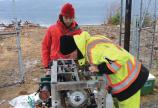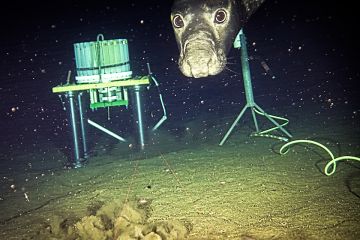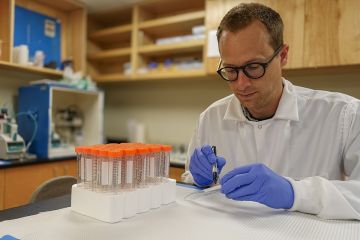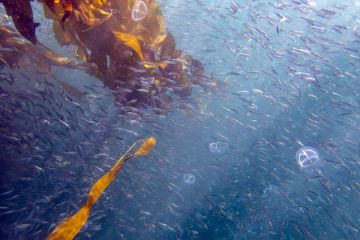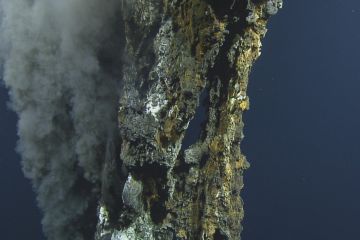Coastal connections
- Jody Paterson
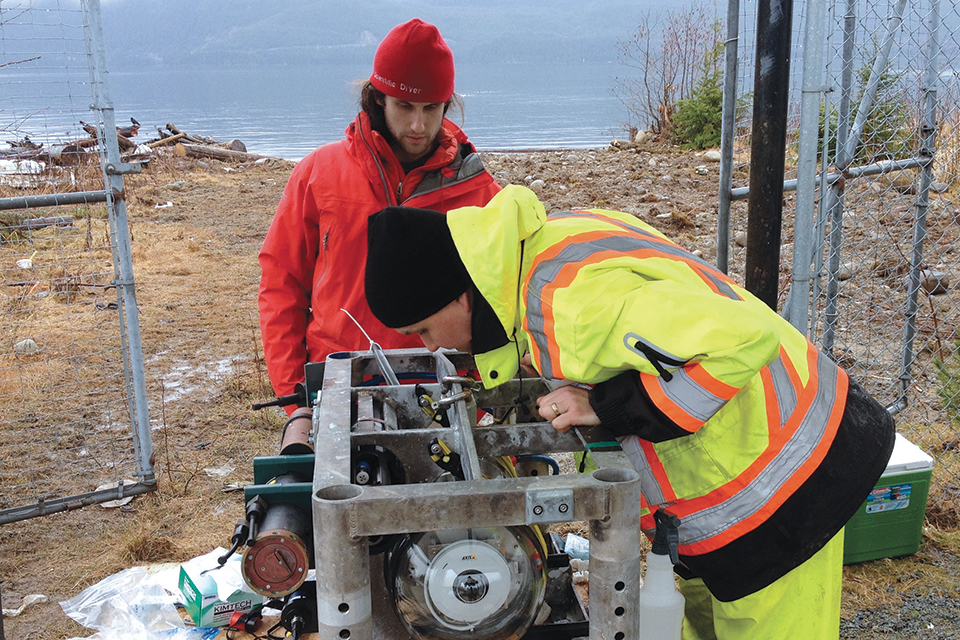
UVic's national ocean observatory facility takes its innovative science to BC communities
The ocean is changing around the world—less oxygen, warmer water, higher acidity. The ability to quantify and observe those changes has never been more important, says Maia Hoeberechts, a scientist with the University of Victoria’s world-leading Ocean Networks Canada (ONC).
ONC launched in 2006 with the installation in Saanich Inlet of Canada’s first “wired” seafloor observatory. Since then, it has expanded to six observatories and more than 50 instrument platforms, with 900 km of fibre-optic cable now installed on the seafloor.
Since 2014, ONC has been installing smaller community observatories on Vancouver Island, along the BC coast and in the Arctic, partnering with First Nations and coastal communities to measure ship traffic, weather, underwater acoustics and more.
“An important aspect of understanding changes in the ocean is baseline monitoring,” says Hoeberechts, who is also associate director of user services for ONC. “You can’t evaluate change until you know what’s there already.”
On Vancouver Island, ONC has a community observatory in Campbell River and another planned for Alberni Inlet. There are already community observatories in the Arctic, Prince Rupert and Kitamaat Village, where a major concern is the impact of industrial development on marine mammals.
ONC tailors data collection to community priorities, notes Hoeberechts. For example, increased ocean acidity caused by higher levels of atmospheric carbon is suspected of causing massive die-offs at shellfish farms south of Campbell River. As a result, ONC will install a pH sensor near the Campbell River observatory to measure ocean acidity.
In Port Alberni, there’s a concern that warming of the upper level of seawater in the inlet combined with loss of oxygen at lower levels is squeezing migrating salmon into a narrowing band of water that makes it difficult for them to reach their spawning grounds.
Our plan is to install a community observatory there, including acoustic instruments to gauge the number of migrating salmon.
—Maia Hoeberechts, ONC scientist
Establishing trust in communities asked to host an observatory is essential, she adds. People are generally welcoming once they see that ONC respects Indigenous knowledge and culture, and that it’s committed to openly sharing data. Raw data is shared with anyone wanting it for non-commercial purposes, allowing communities to “reach their own conclusions.”
The community observatories were built through a three-year project funded by Western Economic Diversification. Fisheries and Oceans Canada and the Canada Foundation for Innovation (CFI) now cover ongoing costs through regular operational grants to ONC.
A new federal funding stream for communities to lead their own ocean monitoring projects opens up more possibilities. An example is the instrumentation now being used by the Kitsumkalum First Nation in the Skeena River to measure the temperature and turbidity of the water column from seafloor to surface.
A similar project is taking place in the Strait of Georgia in partnership with the Pacific Salmon Foundation to map water quality in critical salmon habitat.
More Vancouver Island communities could do the same, says Hoeberechts, eventually monitoring water quality all around the island to gather data for modelling fish behaviour.
“ONC is a pioneer in ocean science, and a pioneer in the way we’re working with communities,” she says. “Together, we’re establishing the science that will underlie the policy decisions of the future.”
EdgeWise
UVic's Ocean Networks Canada is a national science facility, with a growing network of ocean observatories off Vancouver Island’s west coast, in Saanich Inlet and the Strait of Georgia, along coastal BC and in the Arctic.
Think of ONC as a Fitbit for the ocean. Its observatories stream live data 24/7 to researchers across Canada and around the world to monitor everything from ocean change and fish populations, to plate tectonics and tsunamis, and deep-sea ecosystems.
The long-term data being collected by ONC has wide-ranging policy applications in ocean and climate change, emergency planning, pollution, shipping, marine hazard mitigation, renewable resource assessment, and sovereignty and security.
ONC is funded by CFI, the governments of Canada and BC, UVic, CANARIE and IBM Canada.
Join ONC to discover the bounty of the ocean at the Ideafest event “Food for thought: People, place, protein and pronunciation” on March 8, First Peoples House, 6:30–8:30 p.m.
Photos
In this story
Keywords: oceans, research, Indigenous, community, fisheries, salmon, Ocean Networks Canada
People: Maia Hoeberechts
Publication: knowlEDGE

